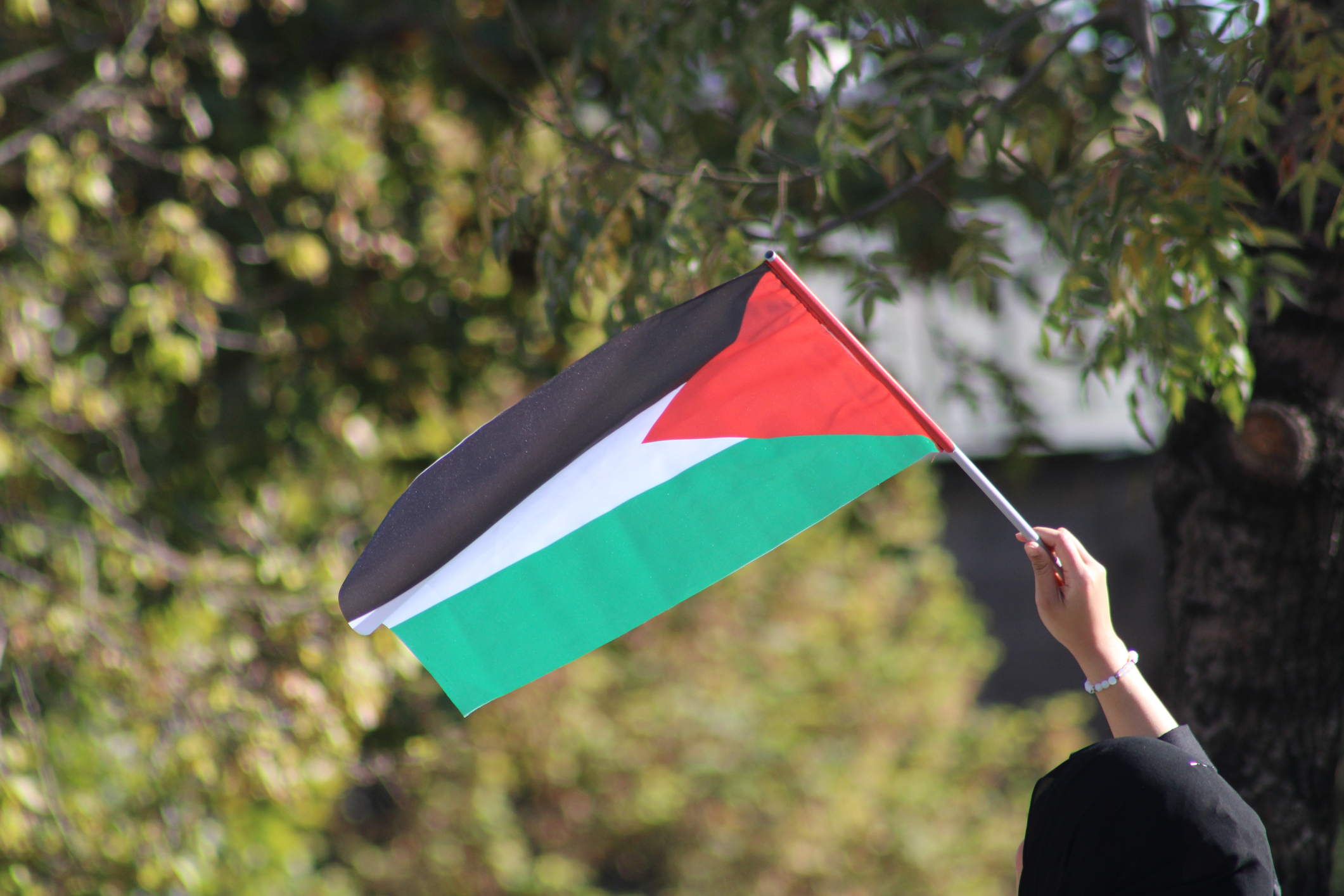
“Where is Ahmad?” The soldier called my name while we were stopped at the last Israeli checkpoint on the way from Ramallah to Jerusalem. I am a Palestinian American. But once I’m in my ancestral homeland, I’m not an American in the eyes of Israeli authorities. I am simply Palestinian, denied the basic right to movement and pilgrimage to the Holy Land.
For too long, Palestinians in the diaspora, like myself, became travelers on our soil. We tried to forget the realities of occupation in the West Bank, and that a few hours south in Gaza our brothers and sisters suffered under even more inhumane conditions.
Now, a reawakening has occurred. It has been six months since Oct. 7, and I’m closer to understanding the catastrophe that my people endured in 1948: children, no older than six or seven, sleeping huddled on muddied floors, under tents in which their lives as refugees began. Children who are slowly freezing to death as bombs rain down upon them. Children who have endured more than I ever have. In that continuous grief of watching my people from afar in my home in Michigan, I have rediscovered what it means to be Palestinian, and, like millions of us, reimagined what a Palestinian future looks like.
In the last few months, we have seen a rise in global Palestinian solidarity and resistance, yet the hardships mounted against Palestinians only seems to grow—during Ramadan and Easter, Palestinian Muslims and Christians could not practice their faith in peace neither in Gaza nor the West Bank, as the bodies pile up. Yet as I watch Gazans perform Friday prayer amid the rubble of their society, I am reminded of what steadfastness looks like, and that you can destroy one’s home or mosque or church, but never one’s Iman, or “faith.” It is watching the undying faith of my people that has reaffirmed, to me, that there will be a free Palestine in my lifetime.
This realization was solidified in the countless marches, protests, and sit-ins that so many have attended since the beginning of the ongoing onslaught, which has killed at least 33,000. Most notably, I felt a shift in the Palestinian future after the Washington, D.C. protest in November of 2023, the largest in the history of the United States in support of a free Palestine. Protests have not died down since then, from Washington to London, Rome, Sana’a, and Sydney.
What I, as someone born in the occupied Palestinian territories, see is resounding support not only for a ceasefire but Palestinian liberation. A tide is turning and I have never been so sure that there will eventually be a free Palestine.
Like many Palestinians of my generation, we grew up everywhere besides our ancestral lands: physically, spiritually, and emotionally disconnected from where we know we belonged. In the first grade, when asked to point out where I am from on a map, my teacher told me that Palestine does not exist. It was a painful reminder of the continued erasure of my people. But I am here; I am Palestinian.
As a Palestinian who has lived in the diaspora for years, I am increasingly imagining what a free Palestine would look like. Will our people get to return? Will Palestinians get to replant the burned olive trees? Will cities once stolen bear their original Arabic names? The essence of resistance to oppression is this ability to imagine liberation—the will of the occupied always outlives the occupier.
Read More: The Nation Builders
But imagining a free Palestine goes further back than the world recognizing our existence. Imagining it also takes root in the memories of what could have been.
It means a free Palestine where our parents and grandparents were not terrorized, dehumanized, and stripped of their land in the Nakba, or “catastrophe.” It means a world without the massacres of Deir Yassin in 1948, Kafr Qasim in 1956, Jenin Refugee Camp in 2002 and 2023, and Gaza in 2008, 2014, 2022, and today. Or a world where the atrocities against our people were not part of our story, that our memory was not built on blood or pain.
I wish to walk the Holy Land with my Jewish cousins—they too are descendants of the Prophet Abraham—where there is no division of ethnicity or religion. Palestinian cities like Ramallah, Bethlehem, Jerusalem, Gaza City, and Haifa have already managed to offer a model of coexistence along religious lines, with Muslims and Christians living peacefully. I hope to see a free Palestine void of the physical manifestations of colonial imagination, as imagined by Palestinians across the West Bank, Gaza, and the millions in the diaspora. In the short term, rebuilding every school, hospital, bakery, and home that was destroyed in ways better than before.
I will not forget my birthplace or my people. Within me is their tenacity in times of immense destruction and sorrow, to thrive in a world where they can move freely in our historic homeland and see our mountains, our sea. Free to practice their intricate dances like dabka, to eat their food like maklouba and knafeh, and sit under the olive trees that our grandparents planted to see freedom in every direction. Until then, we carry on, filled with grief, shame, anger, but defiant in our hope, proud in our identity.
More Must-Reads from TIME
- Cybersecurity Experts Are Sounding the Alarm on DOGE
- Meet the 2025 Women of the Year
- The Harsh Truth About Disability Inclusion
- Why Do More Young Adults Have Cancer?
- Colman Domingo Leads With Radical Love
- How to Get Better at Doing Things Alone
- Michelle Zauner Stares Down the Darkness
Contact us at letters@time.com